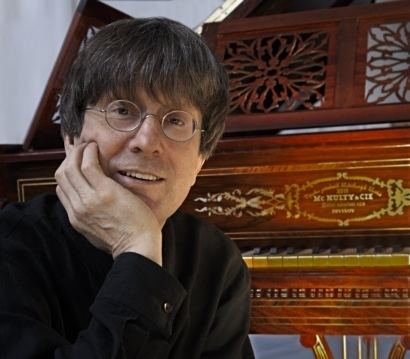Name Paul McNulty Role Piano maker | Education Peabody Institute | |
 | ||
American fortepiano maker paul mcnulty making new franz liszt piano in czech republic
Paul McNulty is a builder of historical pianos, described by the New Grove as " famous for the high standard of [his] instruments." Within the community of builders, McNulty is noted for his efforts to extend the production of historically informed instruments later into history: while he has built many fortepianos in 18th-century style, he has also progressively sought to span the gap between the fortepiano (the cradle of modern historical-piano construction) and the fully modern piano that emerged around the last third of the 19th century. The expanding diversity of McNulty's productions has thus helped "provide an opportunity to extend keyboard performing practice to include the piano repertory of the 19th century" (New Grove).
Contents
- American fortepiano maker paul mcnulty making new franz liszt piano in czech republic
- Paul mcnulty fortepianos cpe bach mozart beethoven schumann chopin liszt pianos
- Life
- McNultys fortepianos
- List of instruments
- References
Paul mcnulty fortepianos cpe bach mozart beethoven schumann chopin liszt pianos
Life
He was born in 1953 in Houston, Texas. In 1976 he attended the Peabody Conservatory, studying classical guitar, then became interested in historical instruments, studying lute performance, etc. In 1978 he entered the New England School of Stringed Keyboard Instrument Technology, where he studied under Bill Garlick. At his final examination McNulty gained the highest possible qualification: "tuning examiner".
He attended a seminar at the Steinway factory in New York and was recruited to work there as restorer and technician, but chose instead to embark on a career as a fortepiano builder, and served his apprenticeship for two years under Robert Smith in Somerville, Massachusetts. McNulty's fortepiano was purchased by Norwegian Academy of Music in Oslo, where it still works flawlessly after twenty five years. Enchanted by the sound of this instrument, the Austrian pianist Paul Badura-Skoda placed an order, as did Trevor Pinnock, ordering a fortepiano for a concert at Carnegie Hall.
In 1986 John Gibbons invited McNulty to accompany his European tour with Frans Brüggen’s Orchestra of the Eighteenth Century. Gibbons performed Mozart’s concertos K.491 and K.466. At the same year McNulty moved to Amsterdam The search for the best materials led McNulty to move to the Czech Republic. It was written in 1823 that Conrad Graf preferred to get his soundboards from the Schwarzenberg Forest (now Šumava) in southern Bohemia. Since 1995 McNulty has been living and working in Divišov, a small Czech town. In 2004 he married Russian-Canadian fortepianist Viviana Sofronitsky.
McNulty’s fortepianos
At present, McNulty builds fortepianos suitable for performances of piano works from Carl Philipp Emanuel Bach, Mozart and Beethoven to Chopin, Liszt and Brahms.
In 2009, McNulty produced the first modern copy of a French piano, a Pleyel, which was Chopin’s favorite brand. In 2011, at request Klassik Stiftung Weimar he reproduced one of Liszt's personal pianos, the Boisselot op. 2800. This instrument was made in 1846 for Liszt’s 1847 Russian tour. In 2015 McNulty extended his list of first modern copies with Streicher piano, Brahms' favourite piano model. Brahms was enthusiastic about a piano (op. 6713), that the manufacturer had given him as a present. He wrote of its exquisite qualities to Clara Schumann, advising her to buy one.
Since 1985 McNulty has made more than 220 pianos, with customers including Malcolm Bilson, Vladimir Feltsman, Ronald Brautigam, Kristian Bezuidenhout, Nikolaus Harnoncourt, Chopin's Institute Warsaw, Glyndebourne Festival, Melbourne Recital Center, Vienna Volksoper, Warsaw Chamber Opera, Royal Academy of Music (London), Amsterdam Conservatory, the Royal Conservatory of The Hague, Hochschule für Musik, Theater und Medien Hannover, Harvard University, Stanford University, Oberlin College (USA), Royal College of Music (London), Schola Cantorum Basiliensis, Sibelius Academy (Helsinki), The Chinese University of Hong Kong, Wien Konservatorium Privatuniversitat,, etc
